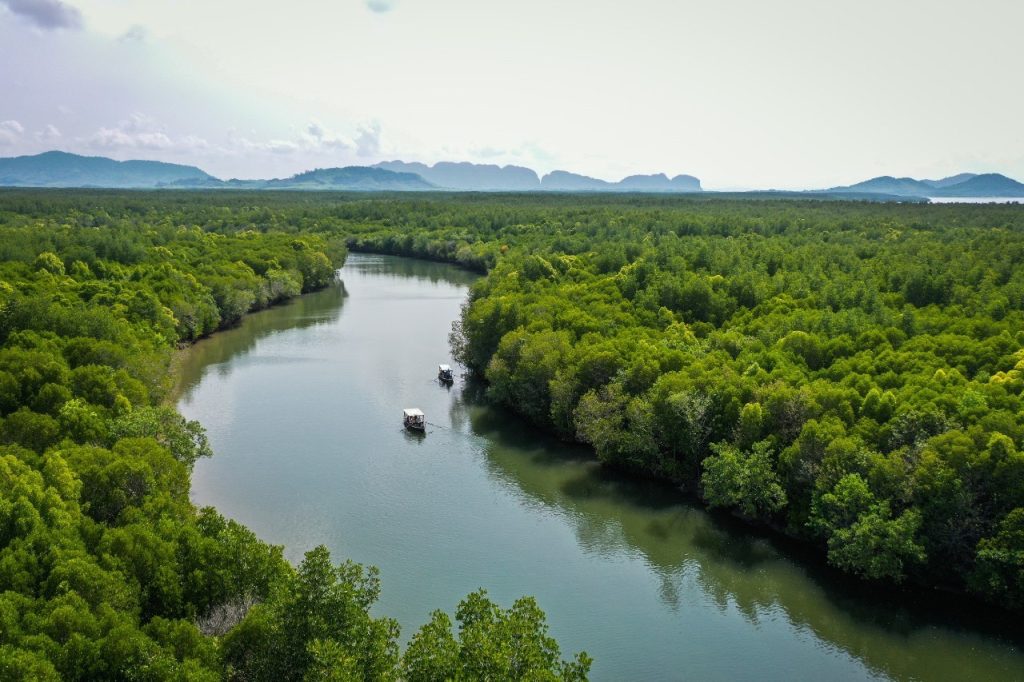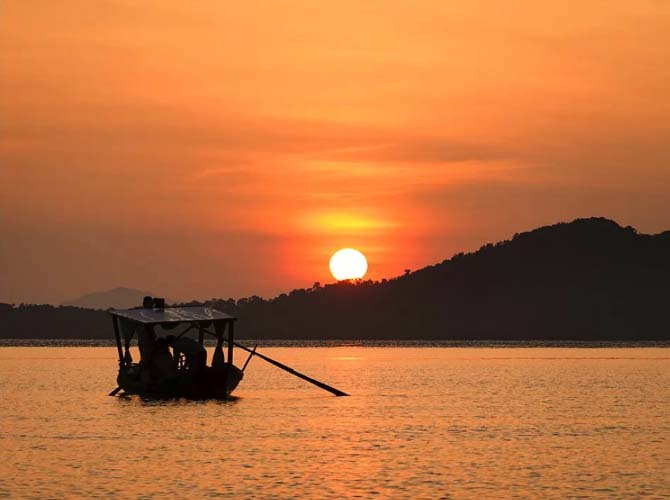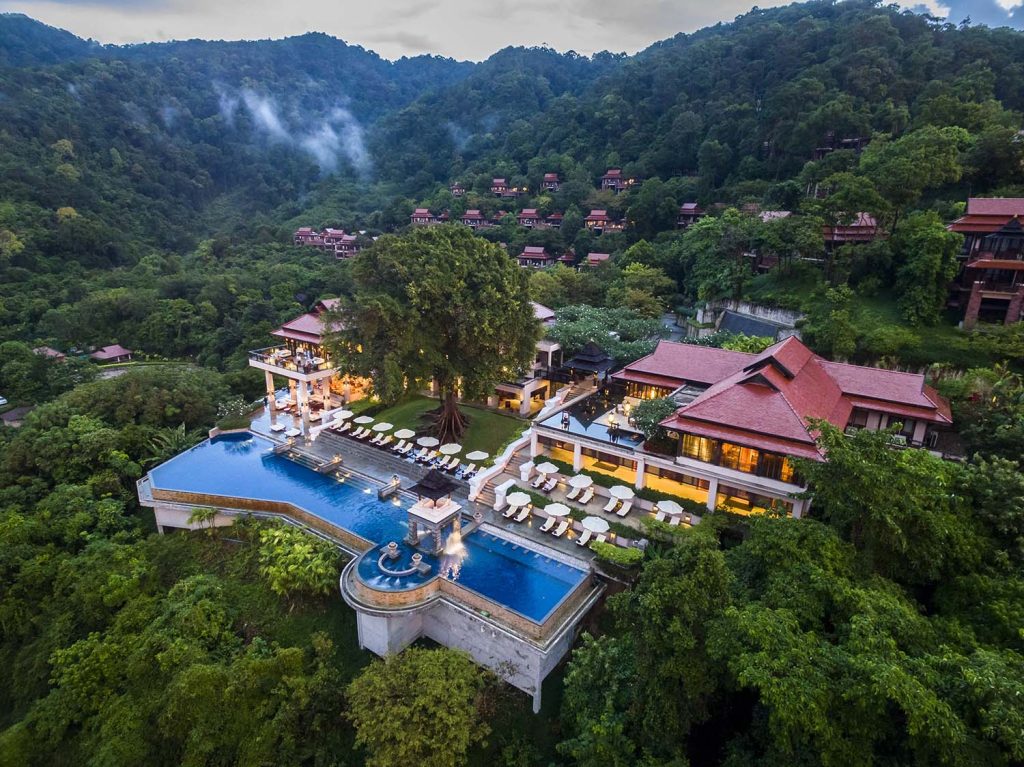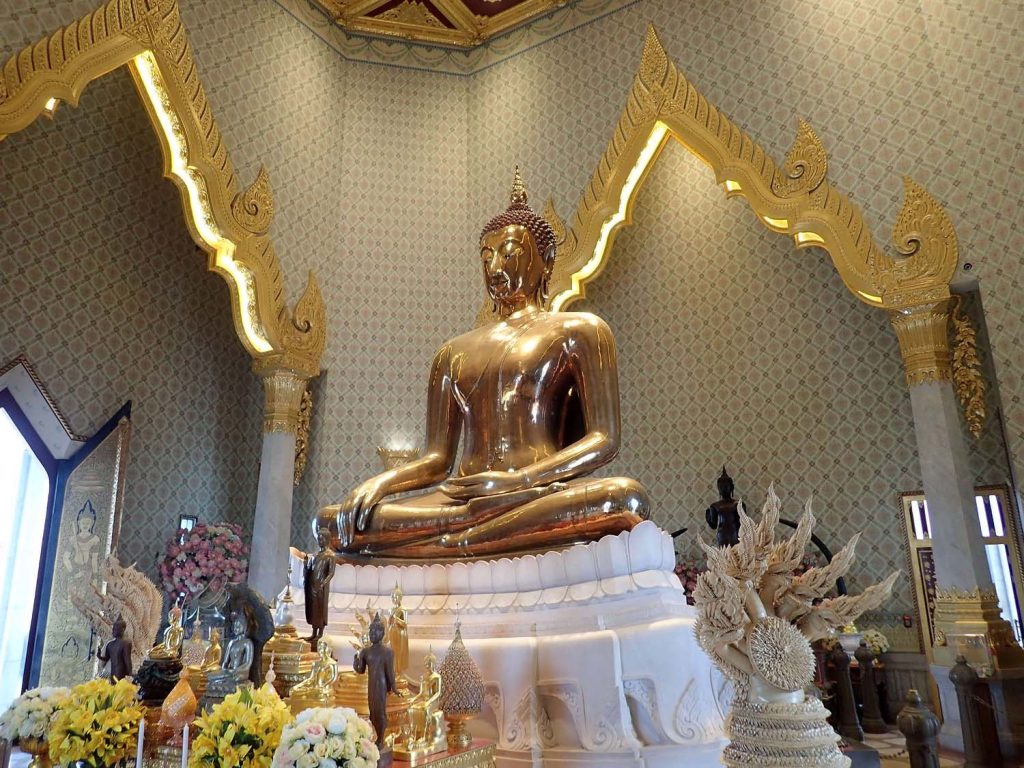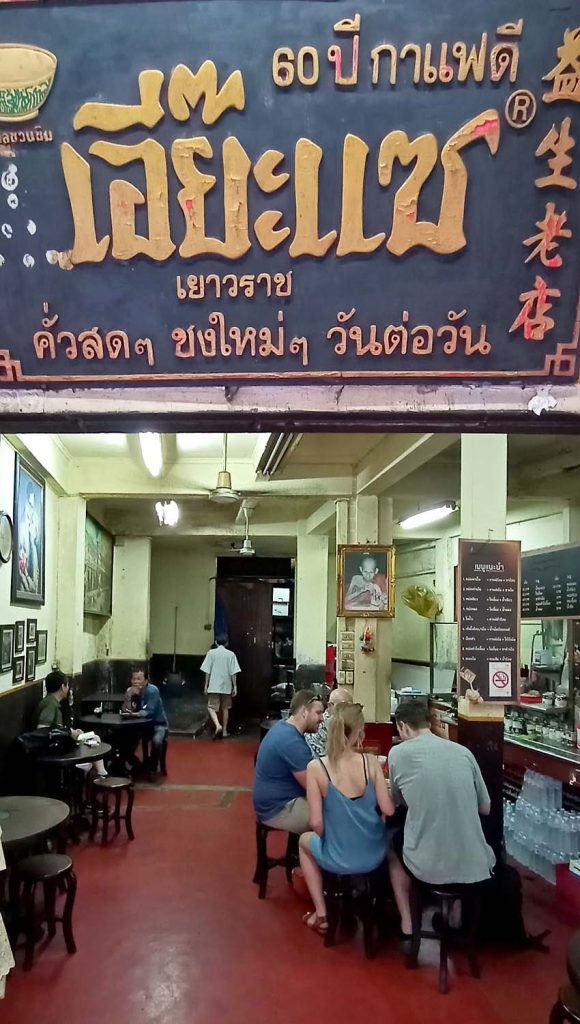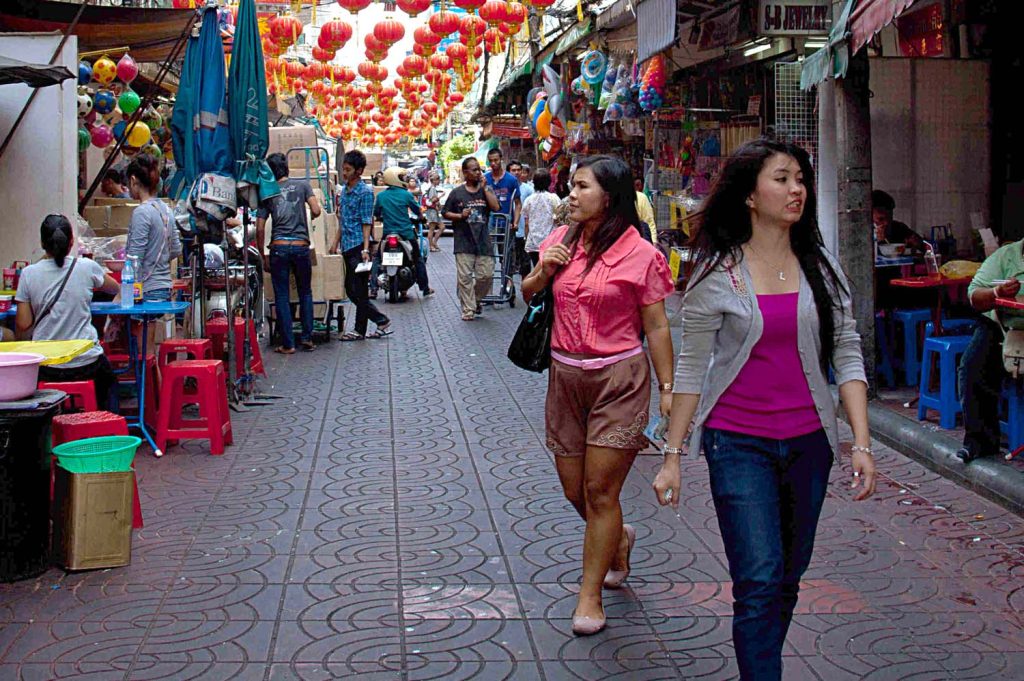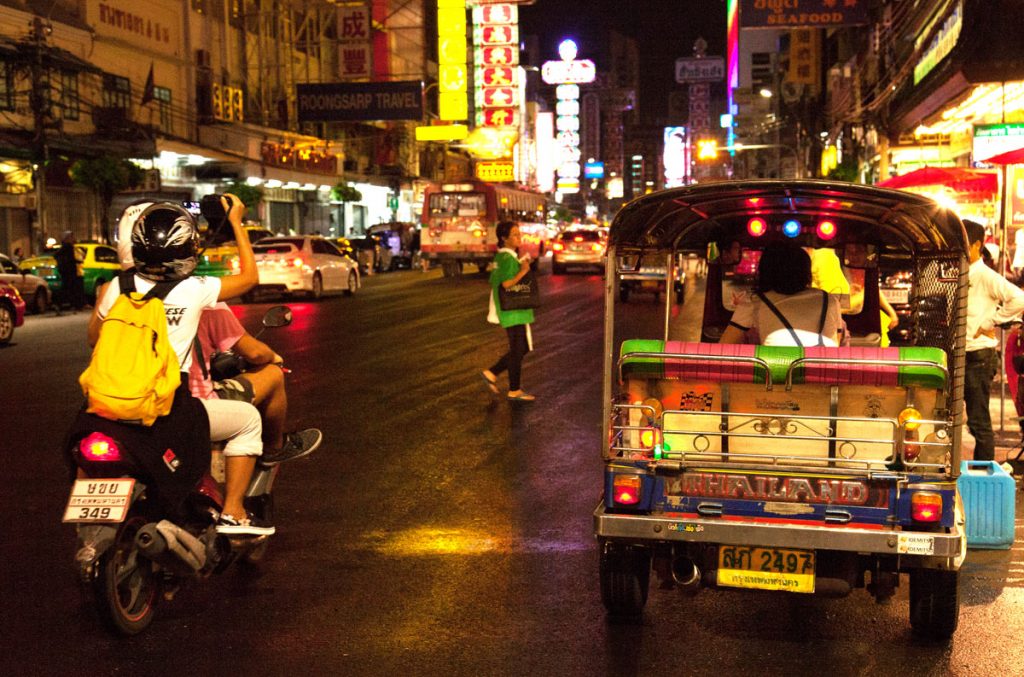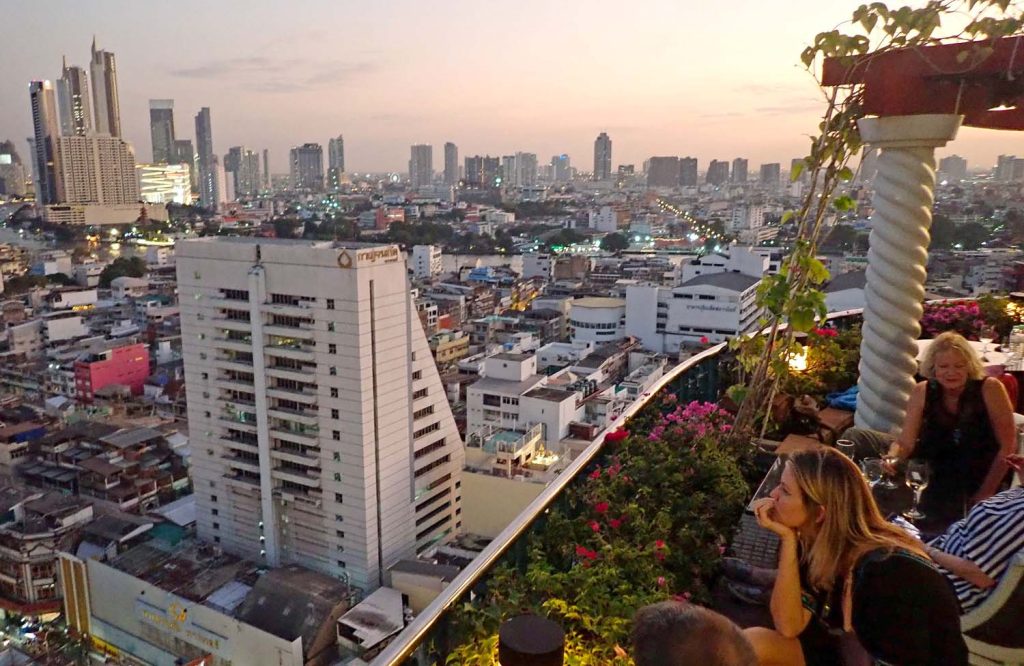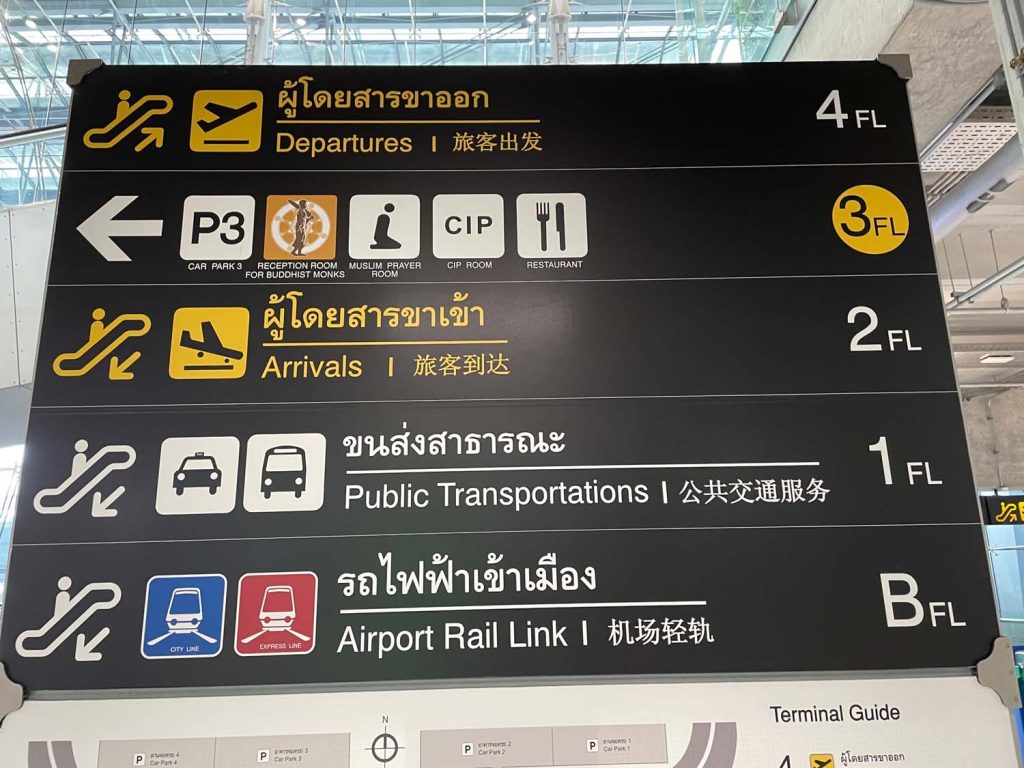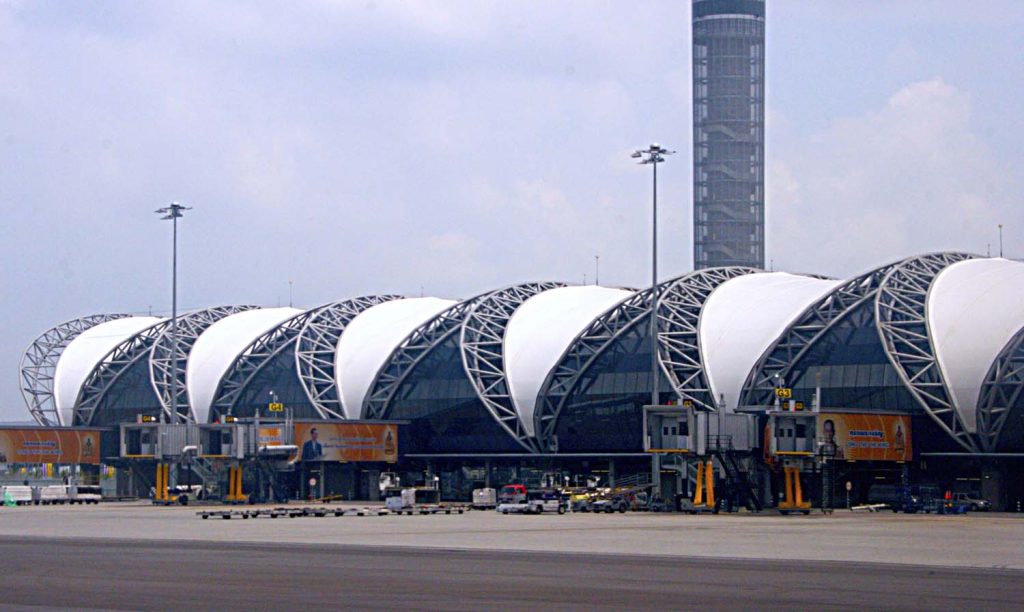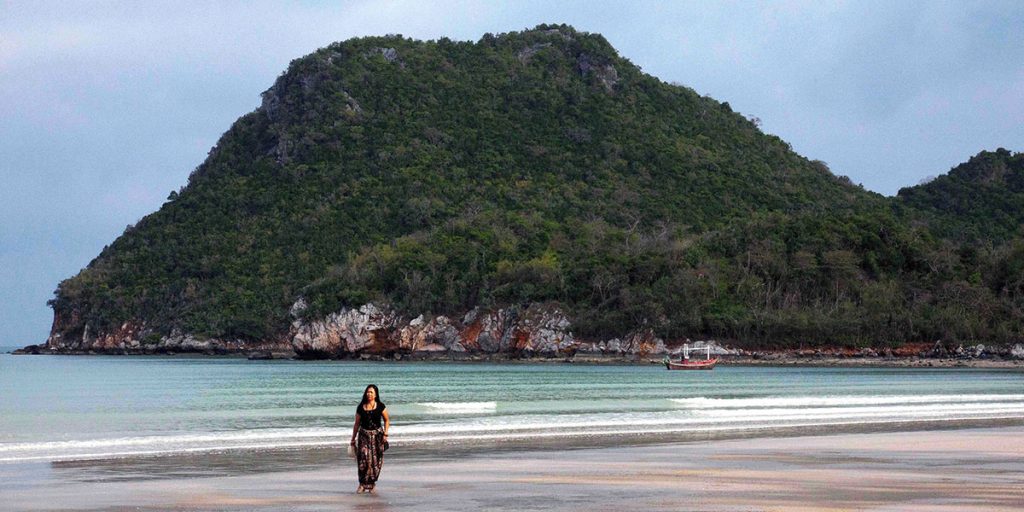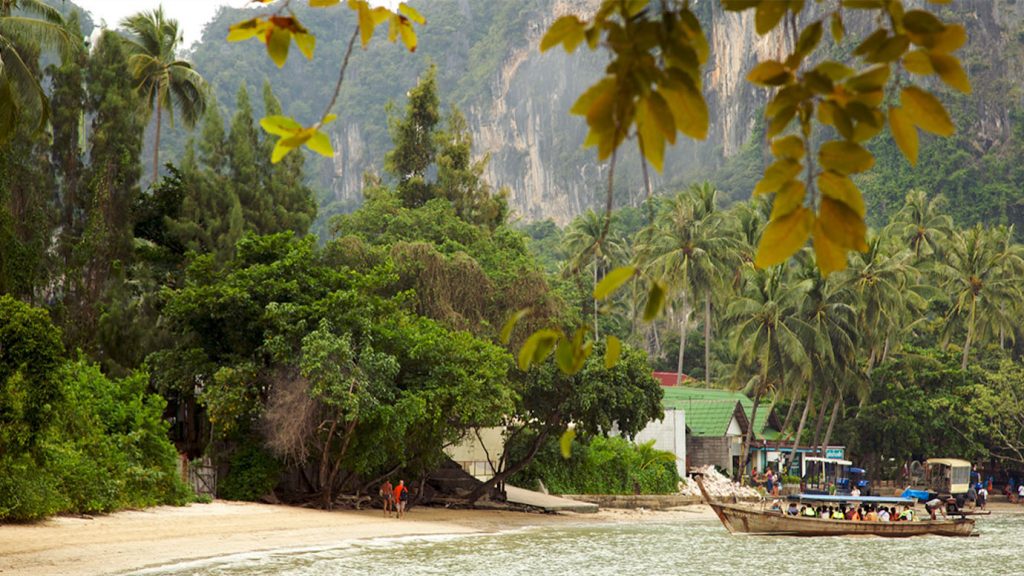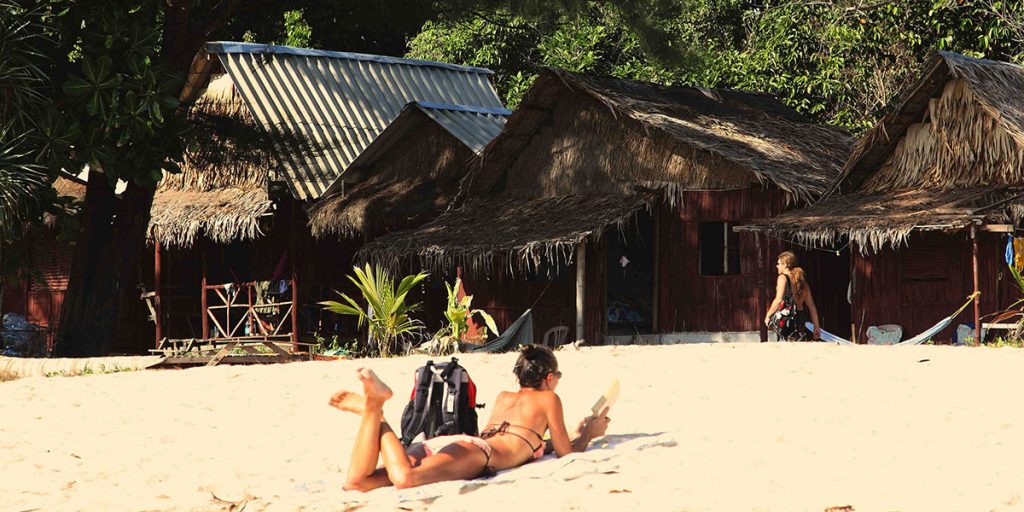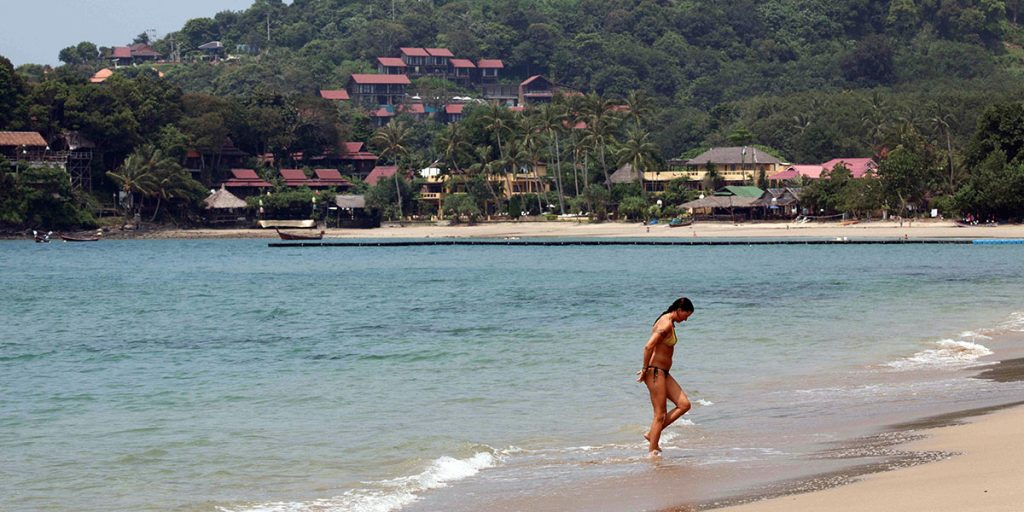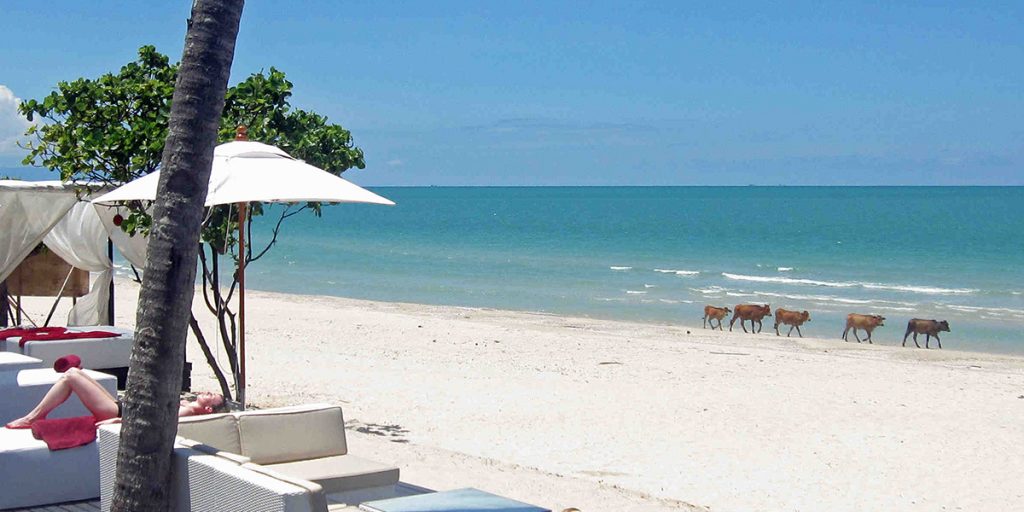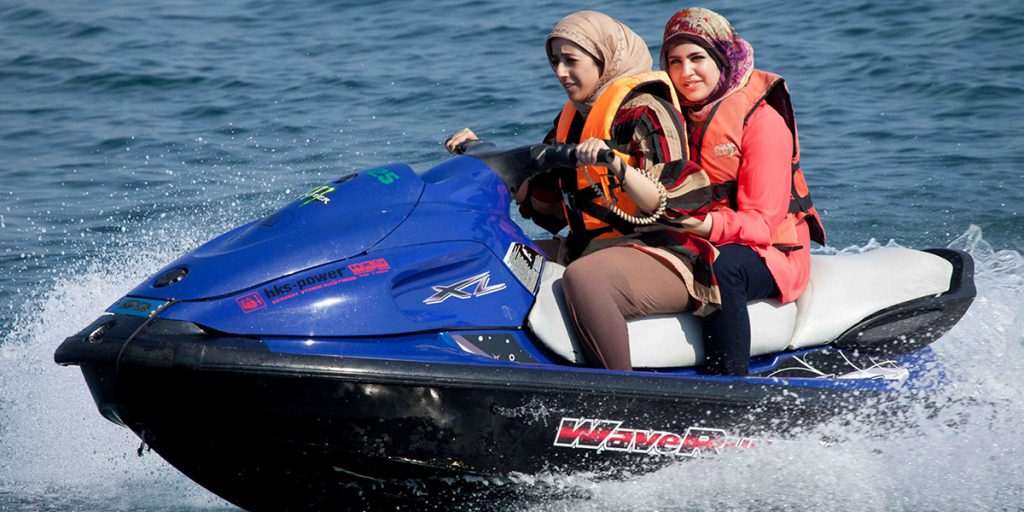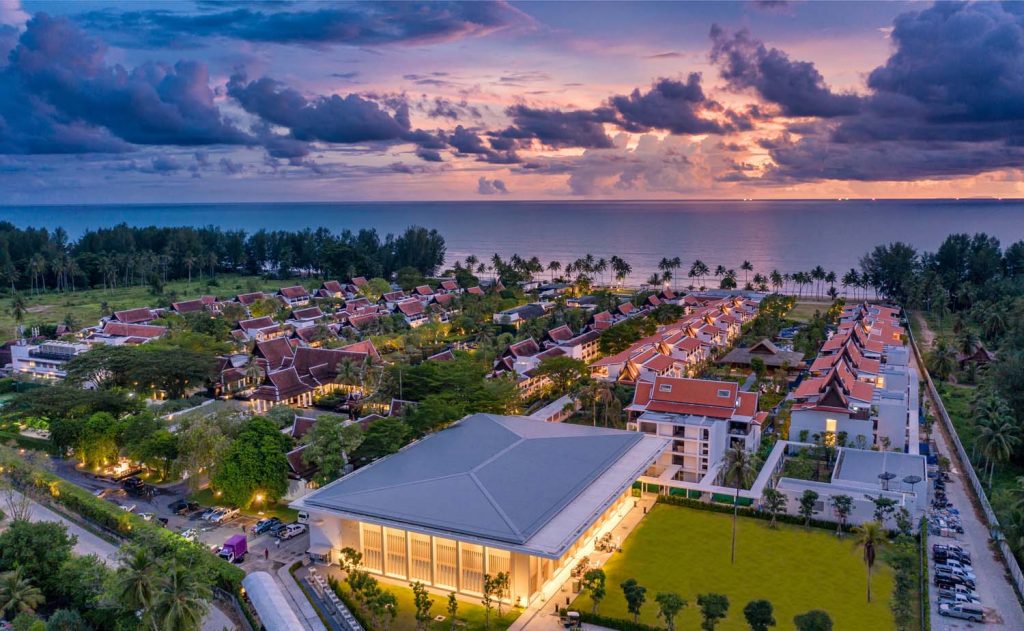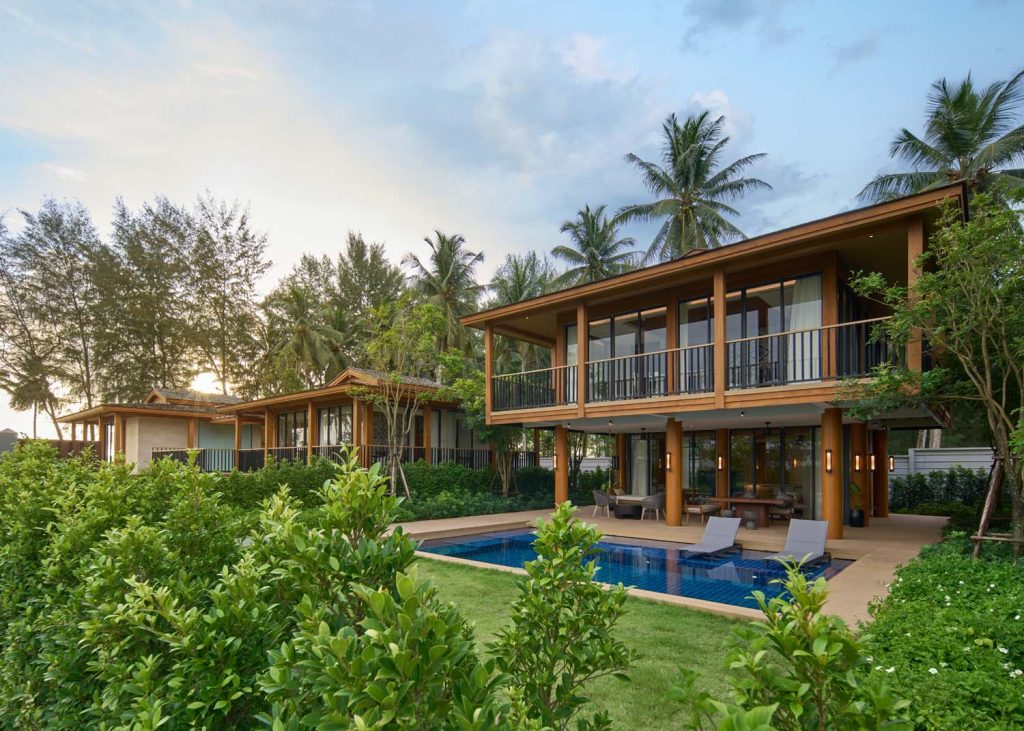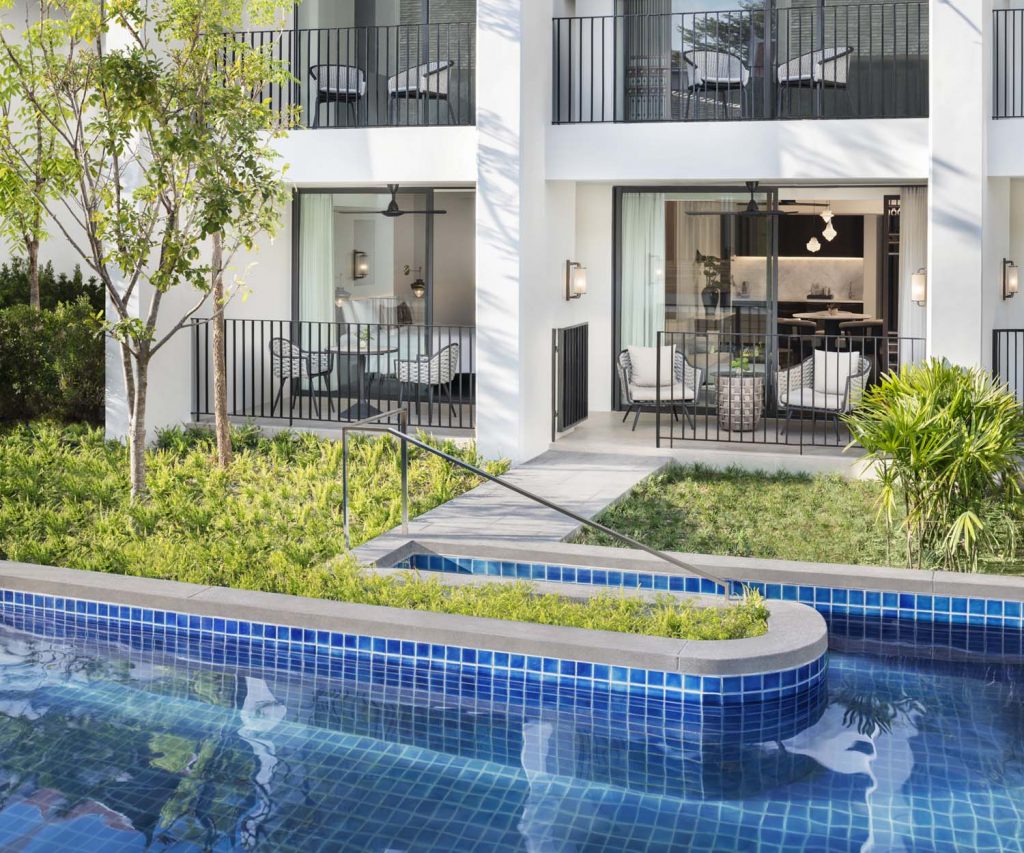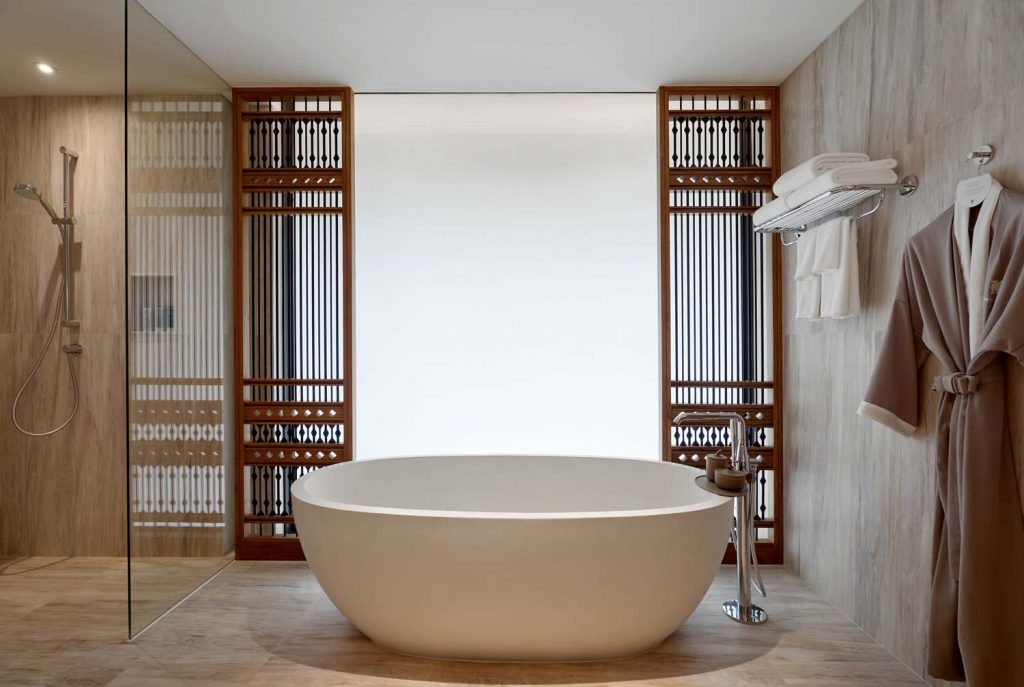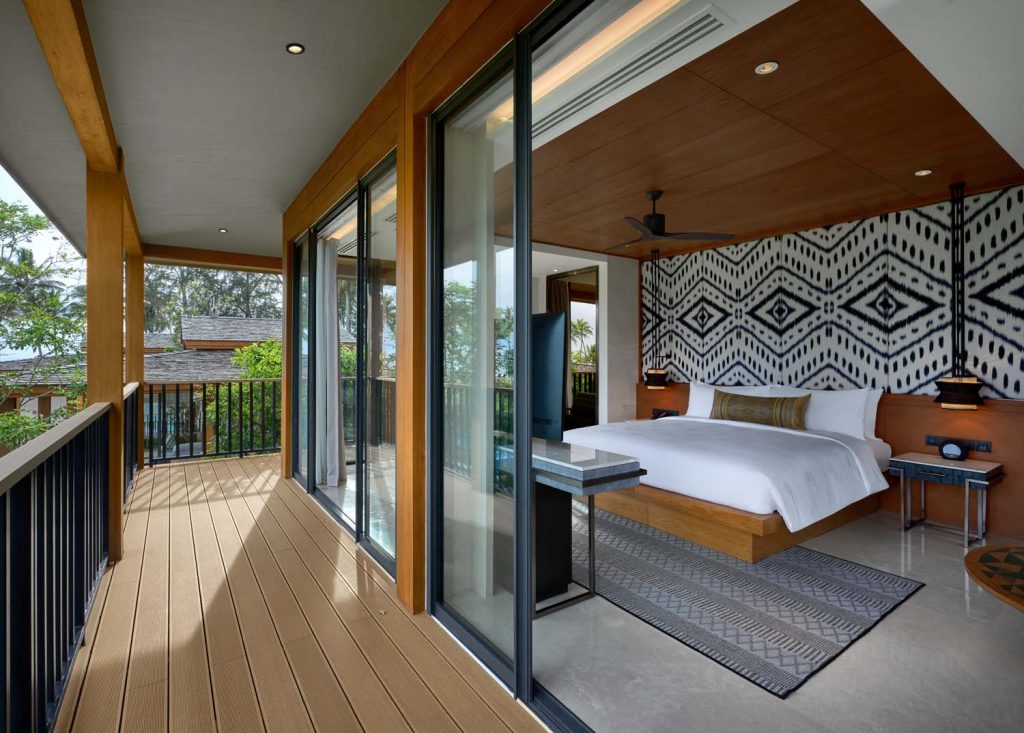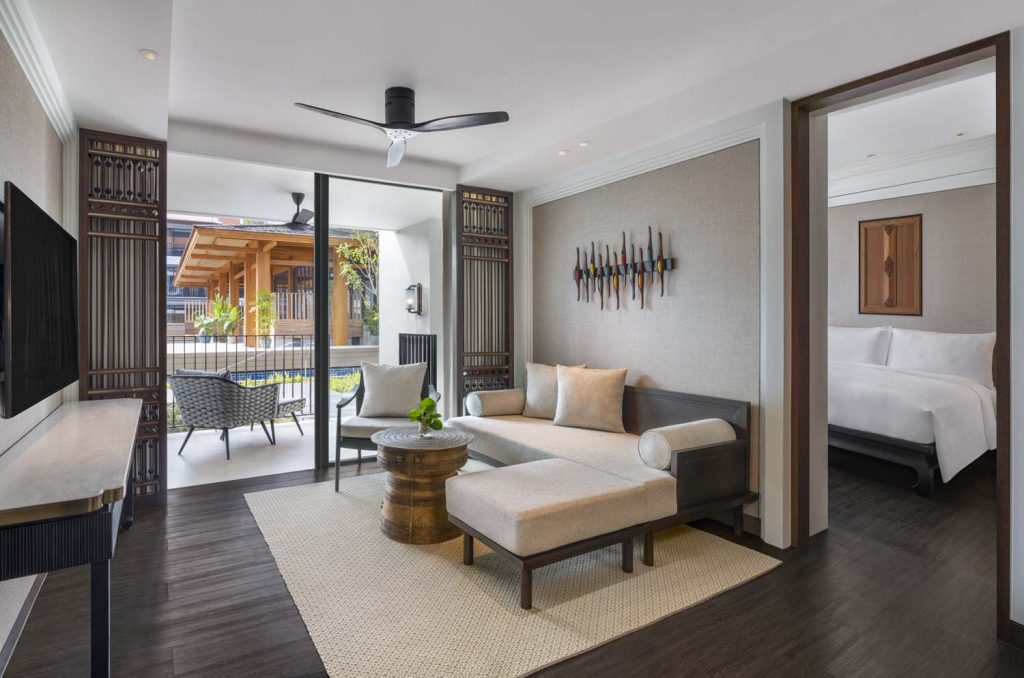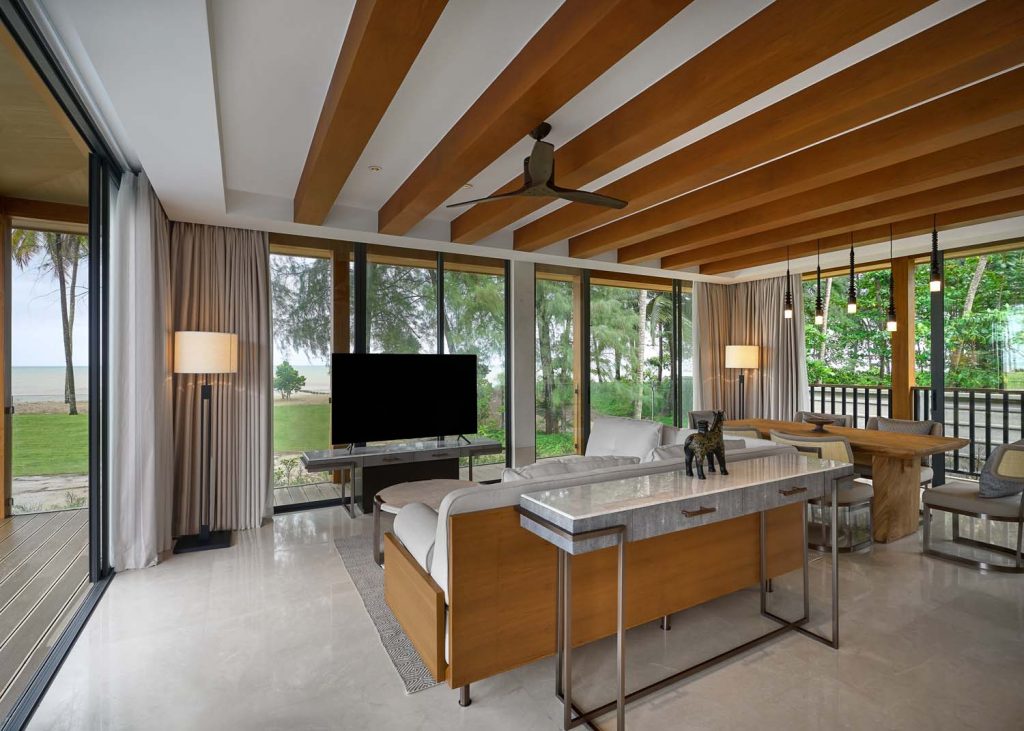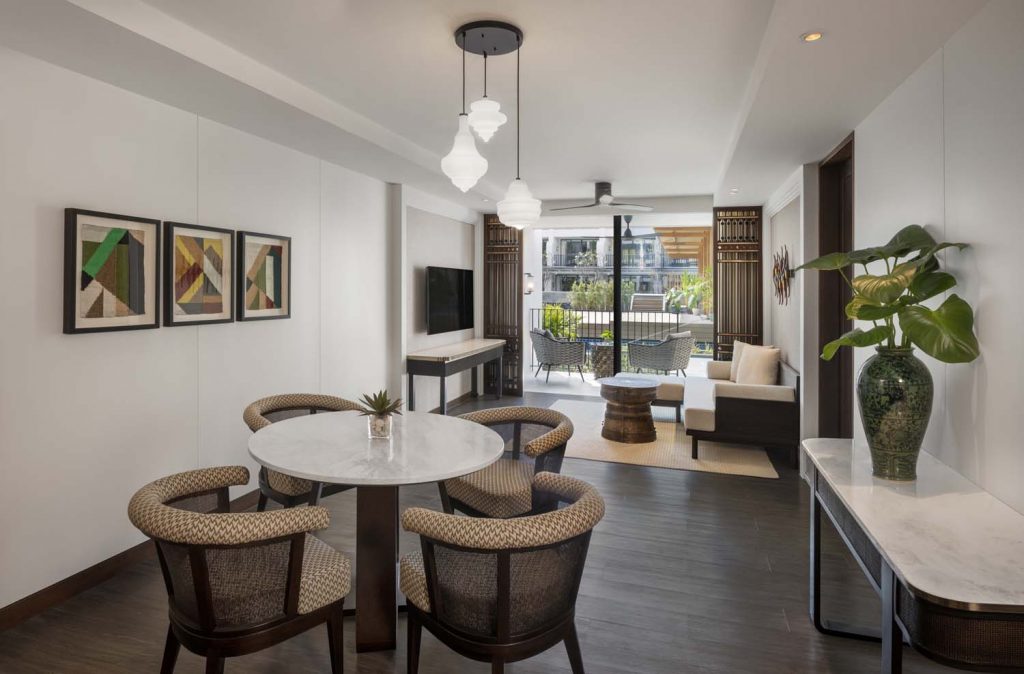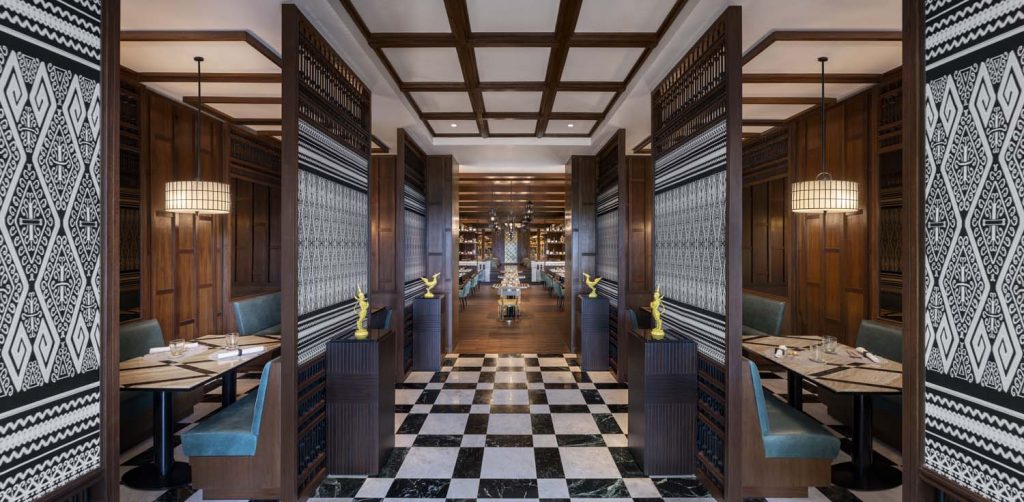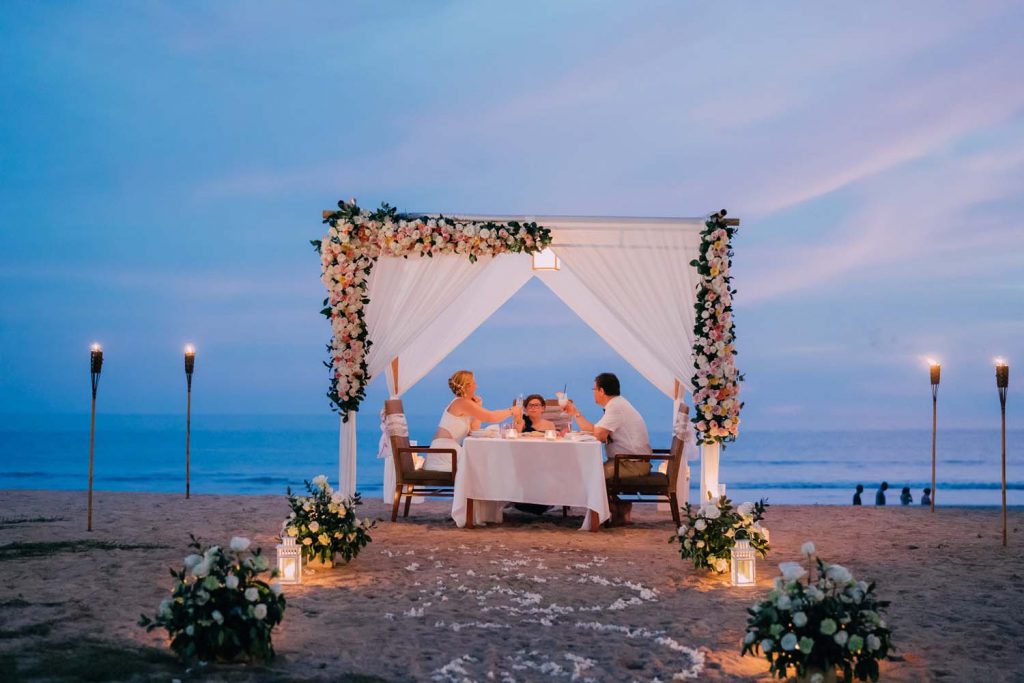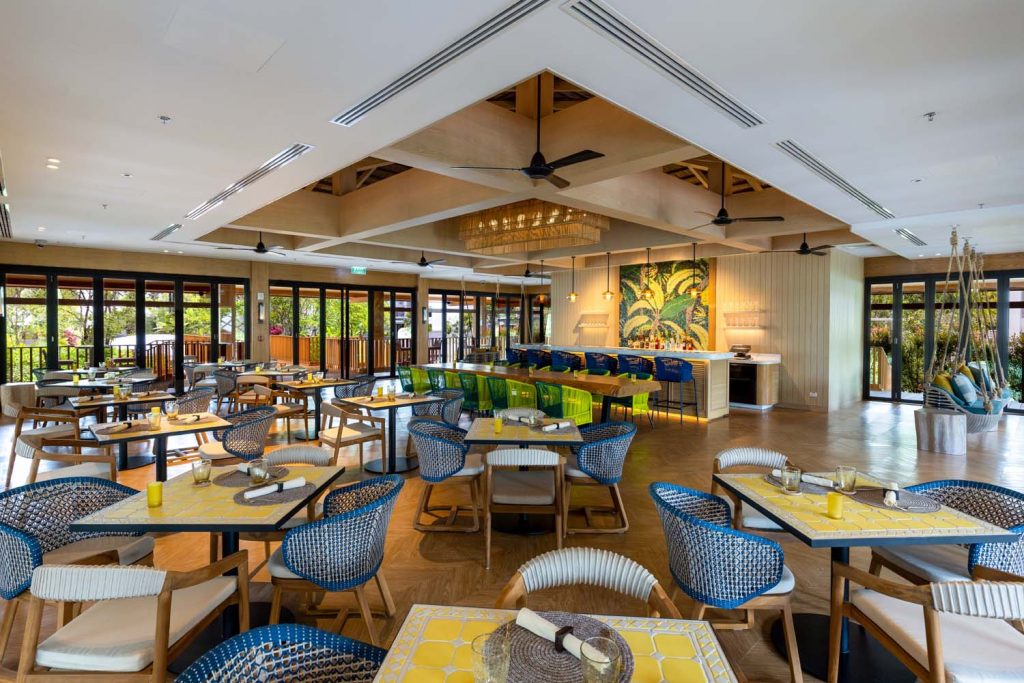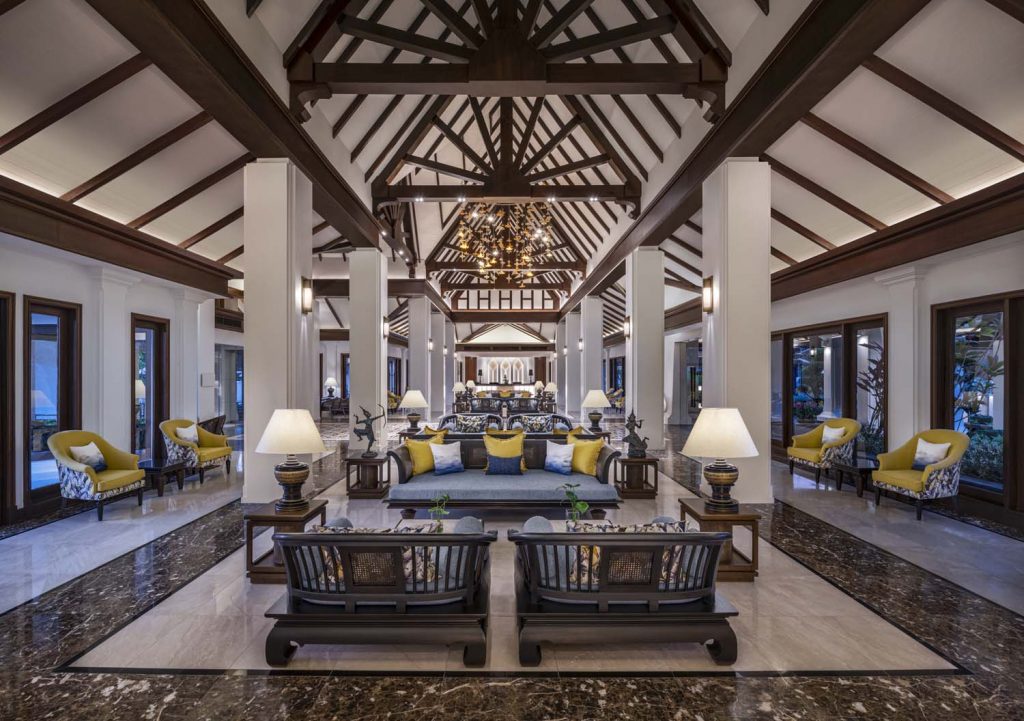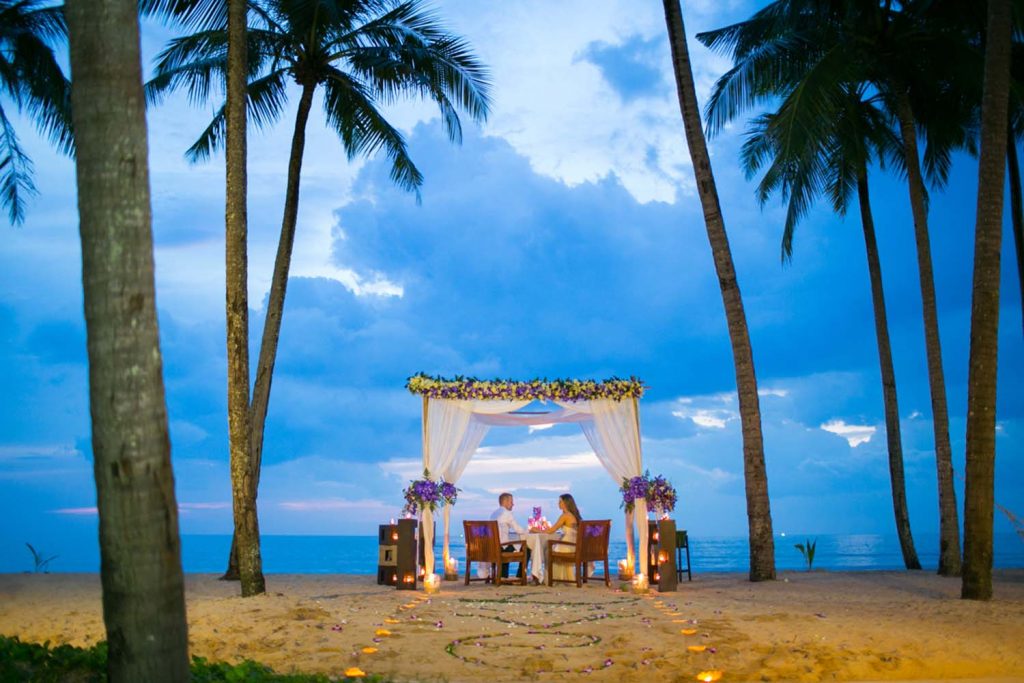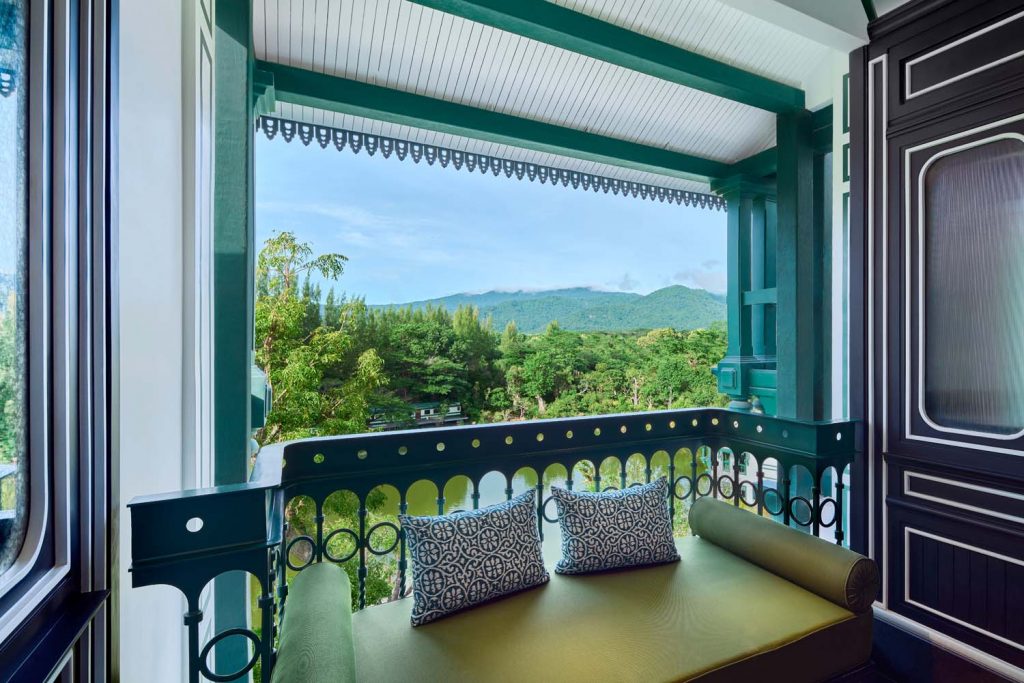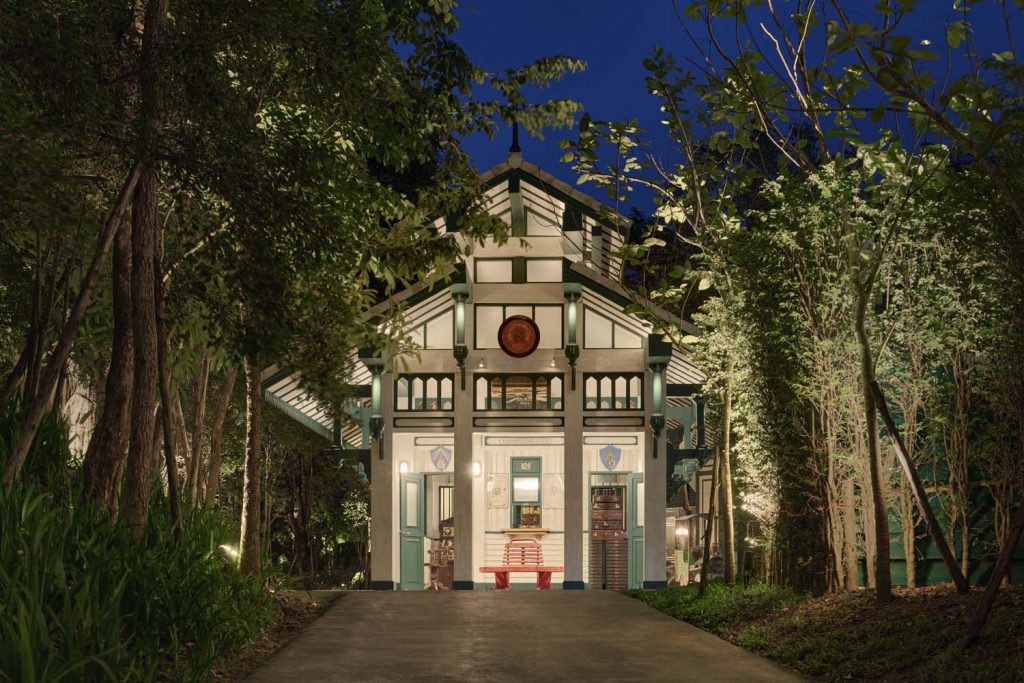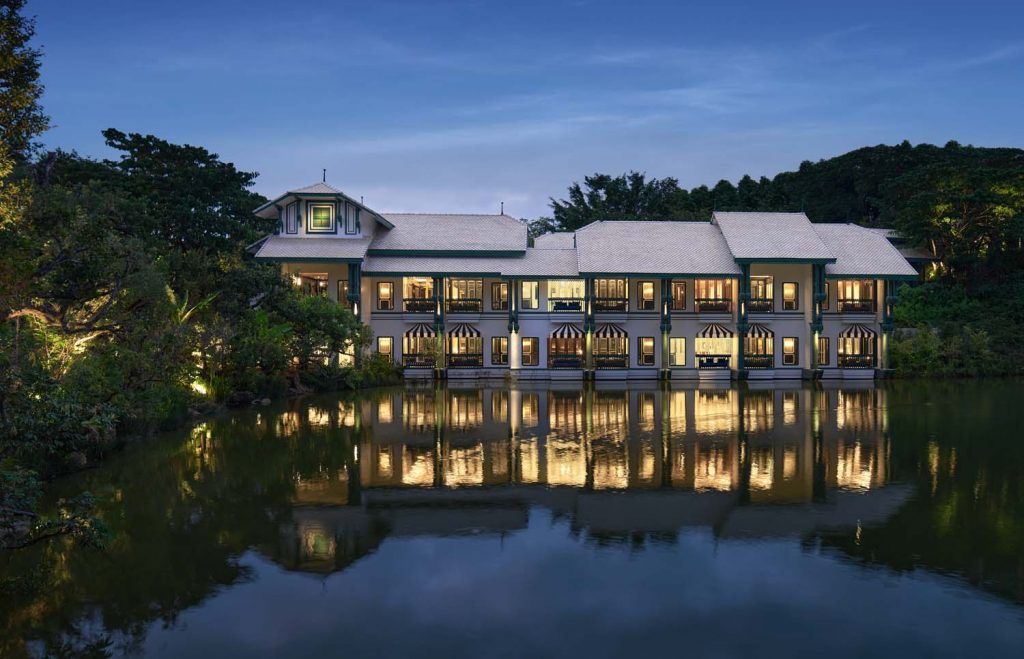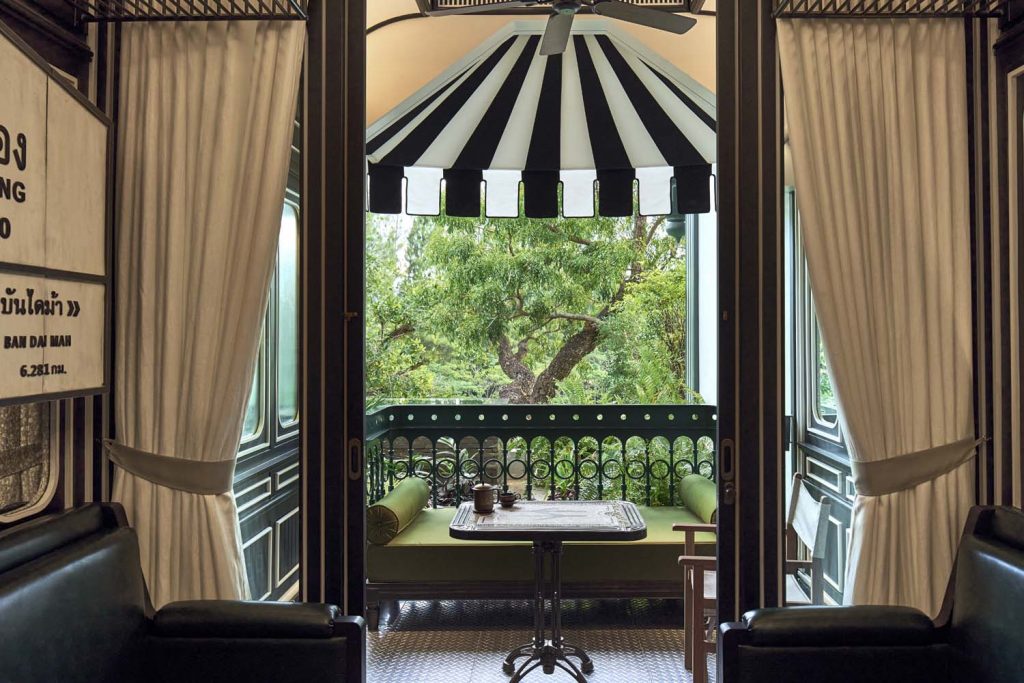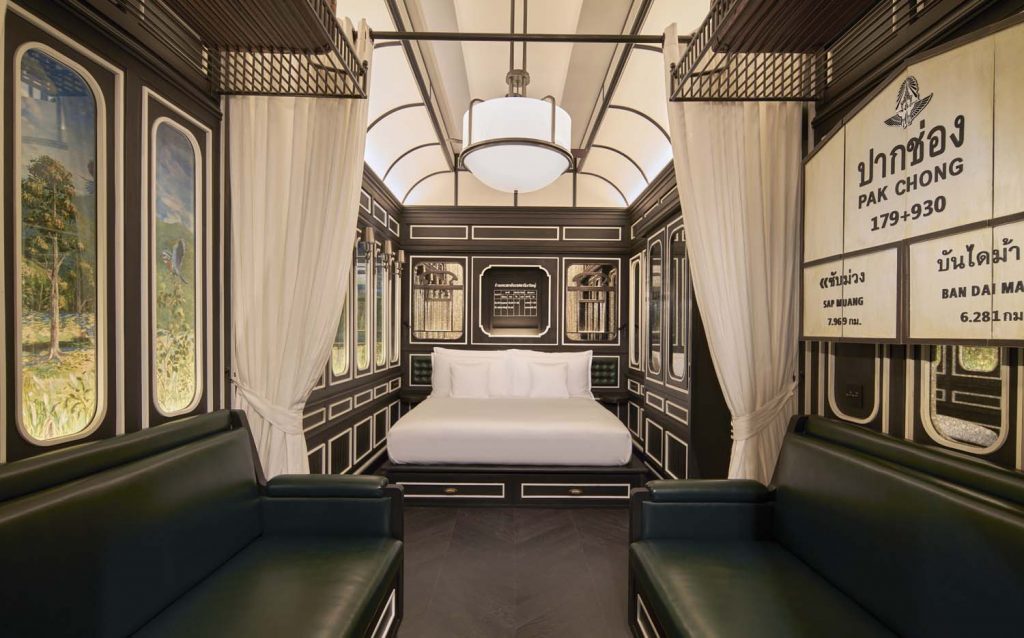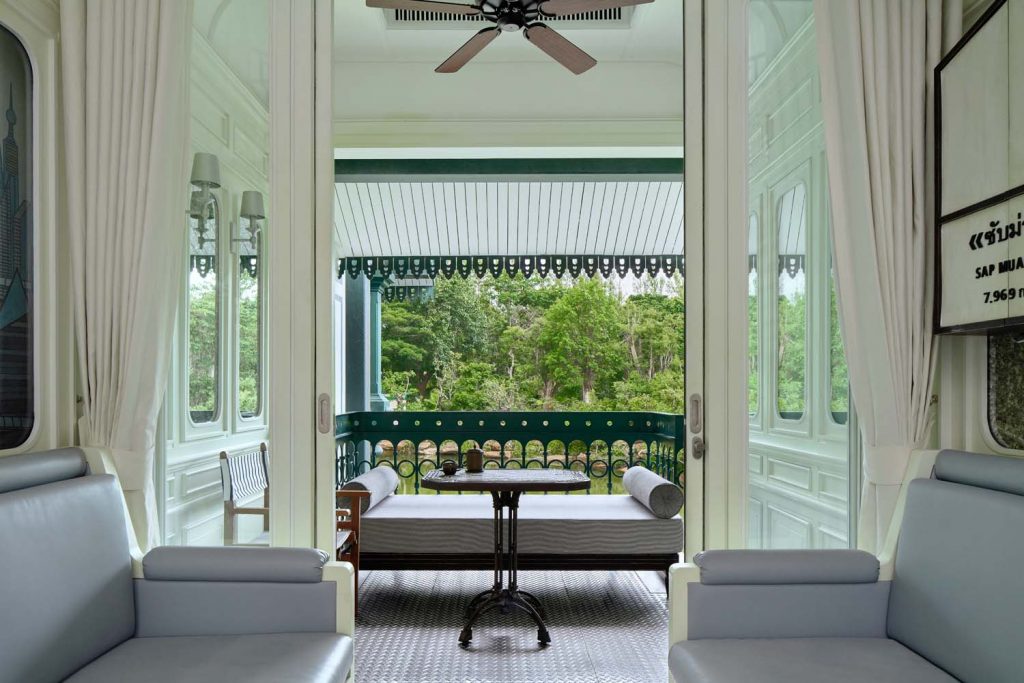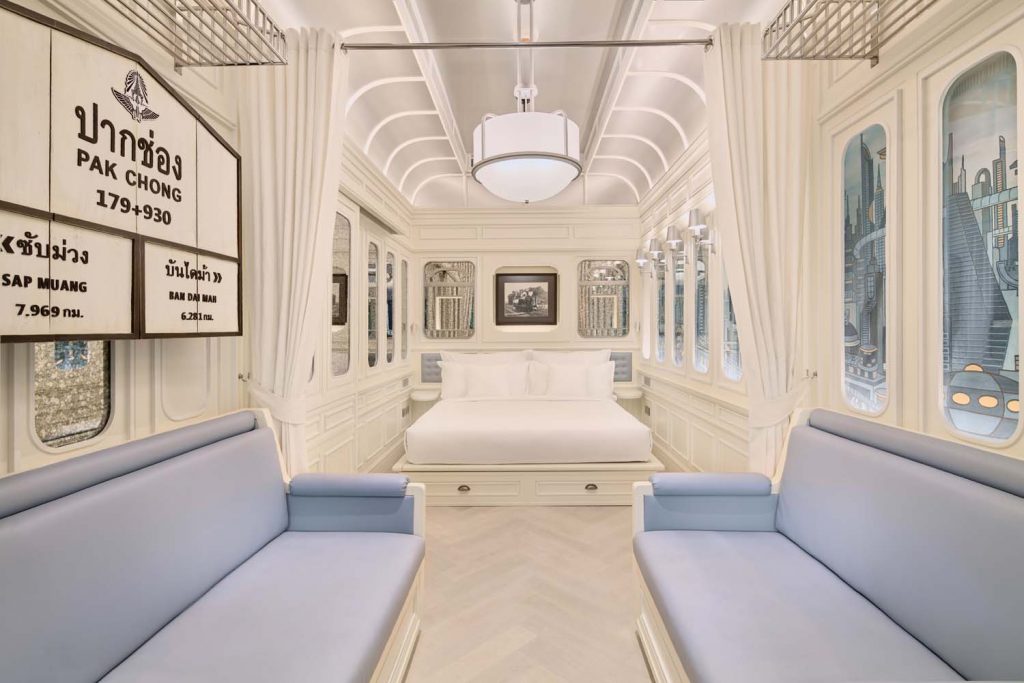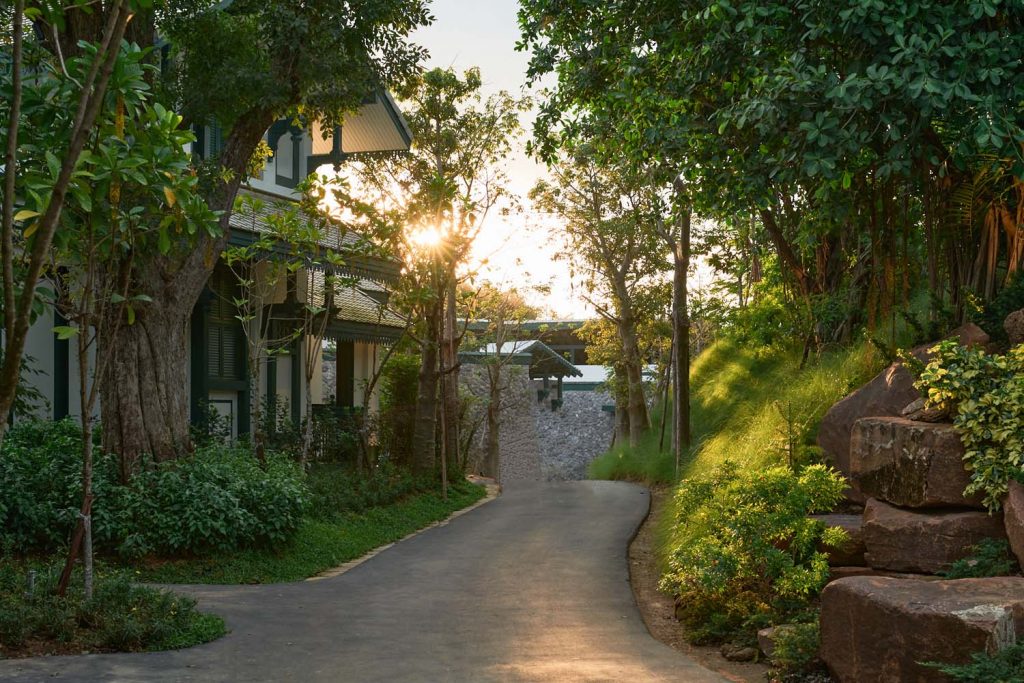Travel writer John Borthwick takes us on a guided tour of Bangkok’s waterside Creative District.

I could laze for hours like a wannabe rajah, watching the Chao Phraya River’s all-day parade of barges, ferries and scuttling longtails. The one thing better to do is go exploring its Bangkok waterside bars and galleries in the what’s now known as the Creative District.
Narrow “soi” lanes, lined with traditional two-storey shophouses run down to the river from historic Charoen Krung Road. It is along these lanes that local creatives and entrepreneurs have turned a grimy auto spare-parts district into an intriguing zone of street murals, speakeasy bars and hole-in-the-wall eateries.
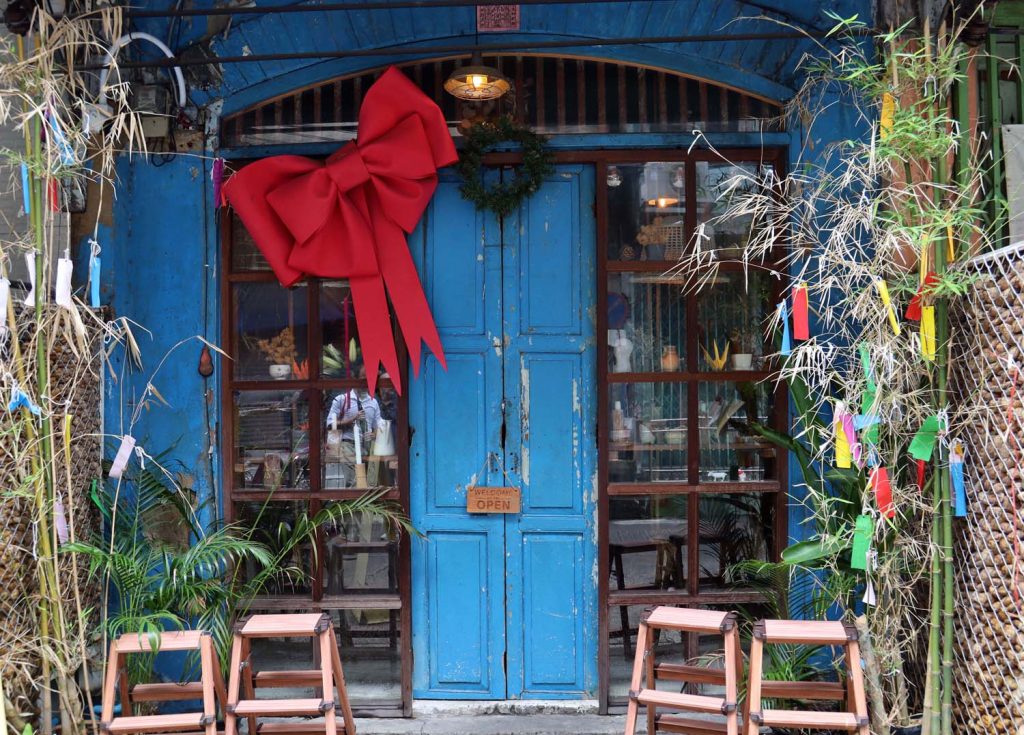
The Creative District is just a short distance from Saphan Taksin BTS station or the Si Phraya ferry pier. I head to it, exploring northwards from Soi 44 up to Soi 30. Here’s a little of what I find.
Sarnies Café, Soi 44. Yes, “sarnies” as in old Australian slang for a sanger, a sandwich. A once-decrepit boat repair shop has been flipped into a cool coffee and snack house. Like the original Sarnies in Singapore, this corner shop is all about proper coffee and what happens when Thai ingredients meet Aussie-style grub.
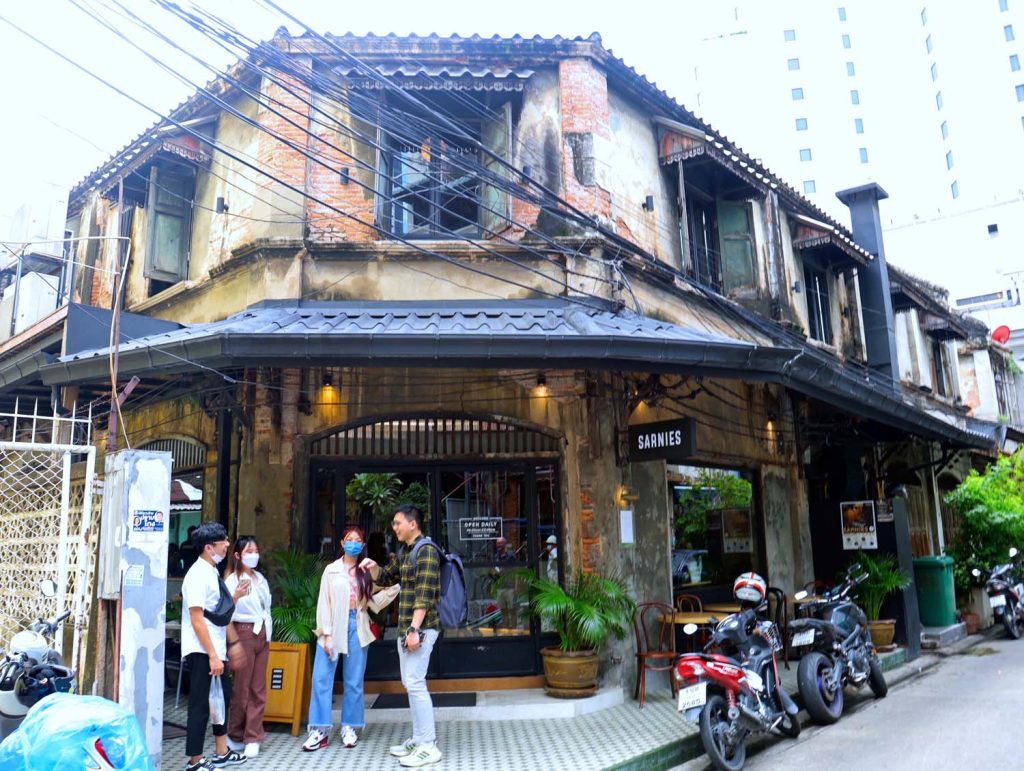
Jack’s Bar. Soi 42. Quite literally a watering hole at the end of the road, Jack’s shack teeters over “the River of Kings” at the end of Soi 42, aka Wat Suan Phlu. Think plastic chairs, cold beer and a hot afternoon fading to sunset. Add spicy eats and another cool sundowner.

Harmonique, Soi 34. Long-established Harmonique restaurant hides behind a blink-and-you-miss-it portal. Inside, a massive banyan tree shades stone-top tables and Chinese lanterns. The menu spans Thai and international fare but the ambience is the real dish.
Hidden Milkbar. Soi 32. This curious establishment is, I’m told, the interpretation by a Thai photographer who has lived in Australia of an Aussie-style milk bar. They serve shakes, drinks and snacks but I keep missing its opening hours, so the mystique grows.
BUKRUK Wall Art, Soi 32 to 28. Bangkok’s 2016 BUKRUK Urban Art festival saw artists from around the world invited to create street art here. Stroll along these connecting sois and be ambushed by the vivid results.
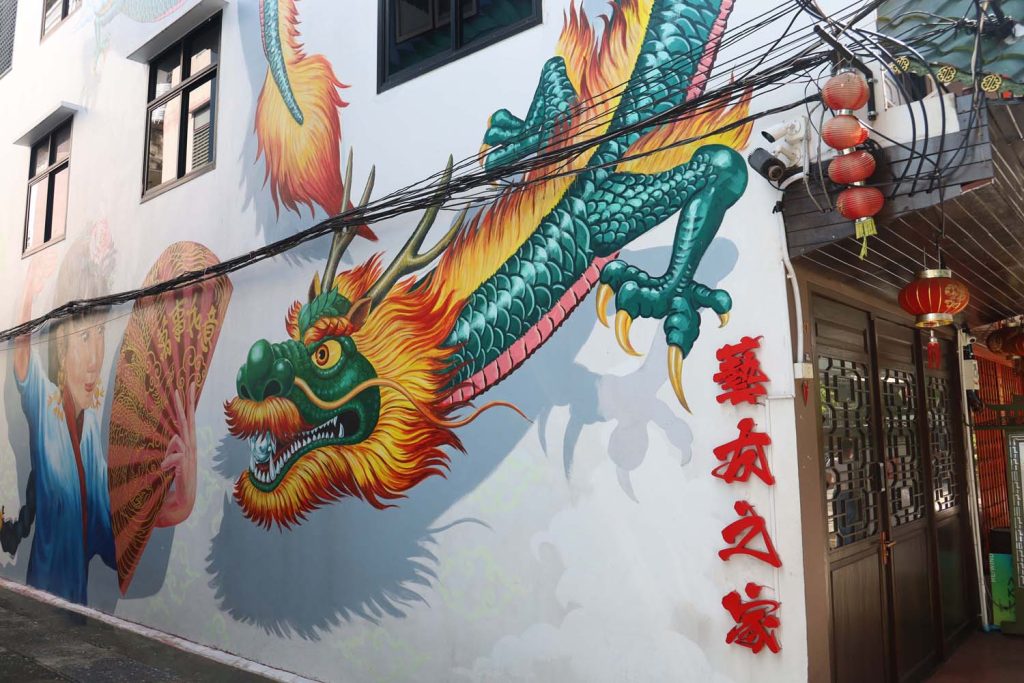
House No. 1, Soi 30. This neoclassical 1900’s building on Captain Bush Lane was Siam’s first official postal address. It once housed the trading company of Louis T. Leonowens, the W.A.-born son of Anna Leonowens — she of “The King and I” fame or infamy. Not open to the public.
Vhils Street Mural, Soi 30. Portugal’s elegant riverfront embassy, established in 1820 is the oldest diplomatic residence in Thailand. In 2017 the visiting Portuguese artist Vhils was given free rein along the embassy’s long street-front wall and hammered himself a brilliant place in mural history.
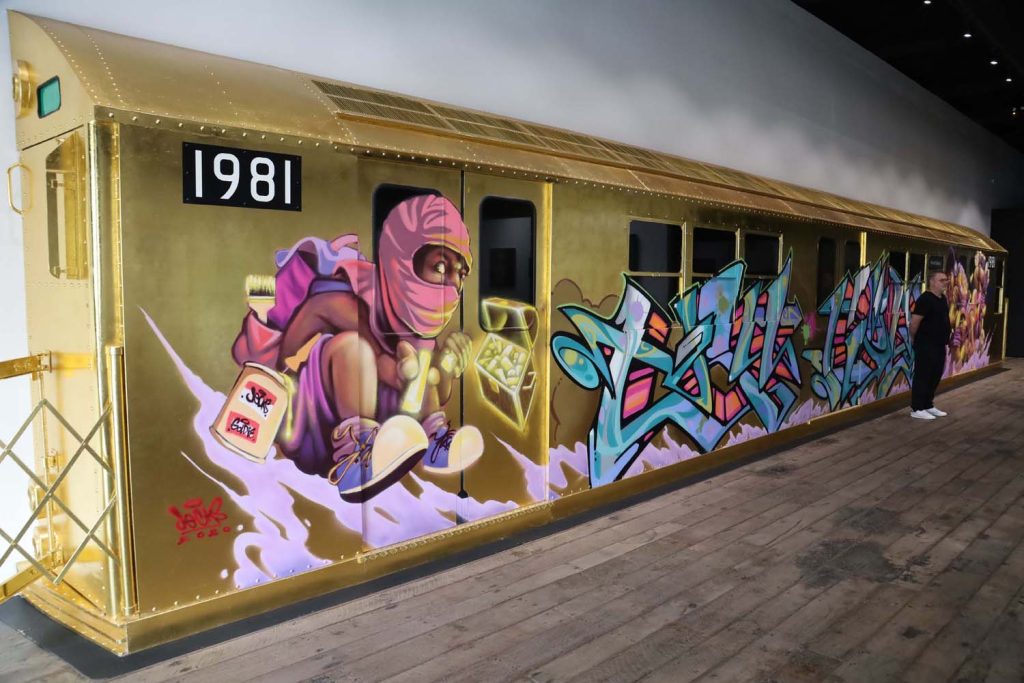
Warehouse 30, Soi 30. Seven renovated warehouses between Soi 32 and 30 form a hub of the creative district, encompassing boutiques, galleries, cafes and co-working spaces. Don’t miss what looks like an army disposal store that’s stacked with vintage clothing, music and eclectic memorabilia.
ATT 19 Gallery, Soi 30. An innovative family turned this century-old, former Chinese schoolhouse into a mixed-use retail, art and exhibition space. Design and fashion, plus exhibitions by emerging artists hum within its old teak and brick walls. And for life support there’s BAAB — the Bad Ass Asia Bar.
Jua, Soi 28. Jua bar lurks far down a shady lane in a former shophouse gambling den. Specialising in “artisanal” sake and tapas, it bills itself as “an American twist on a traditional Japanese yakitori joint.” Go on, investigate. Baan Rim Naam, Soi 22. Stretching along the riverfront, this reincarnated 19th century warehouse is perfect for democratic afternoon drinks or just watching the river roll by like time. By night it gets more formal about its Thai tapas menu, cocktails and classic dishes, so book well ahead.

